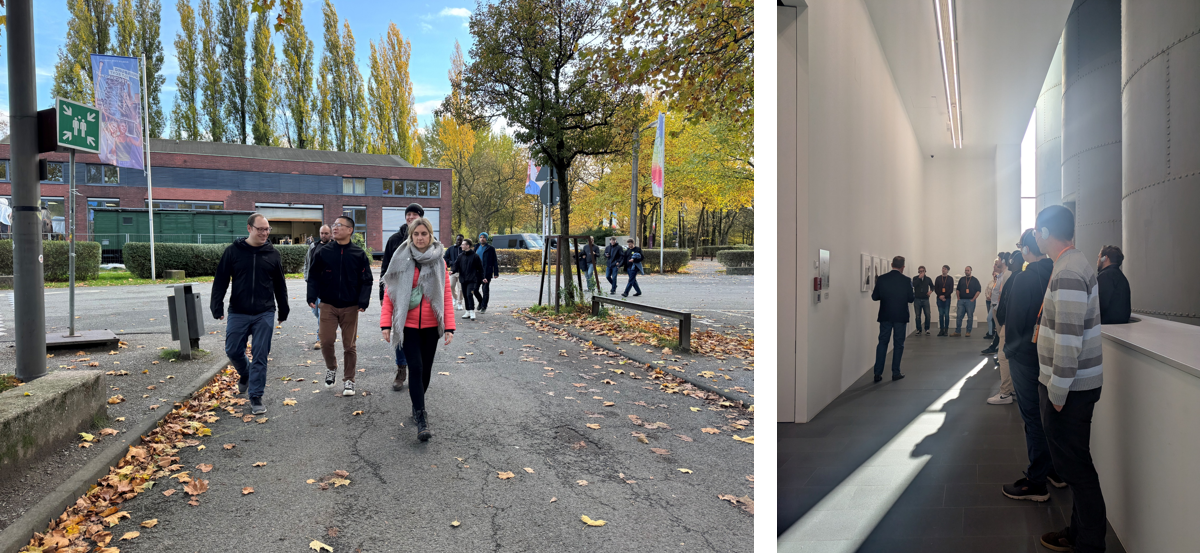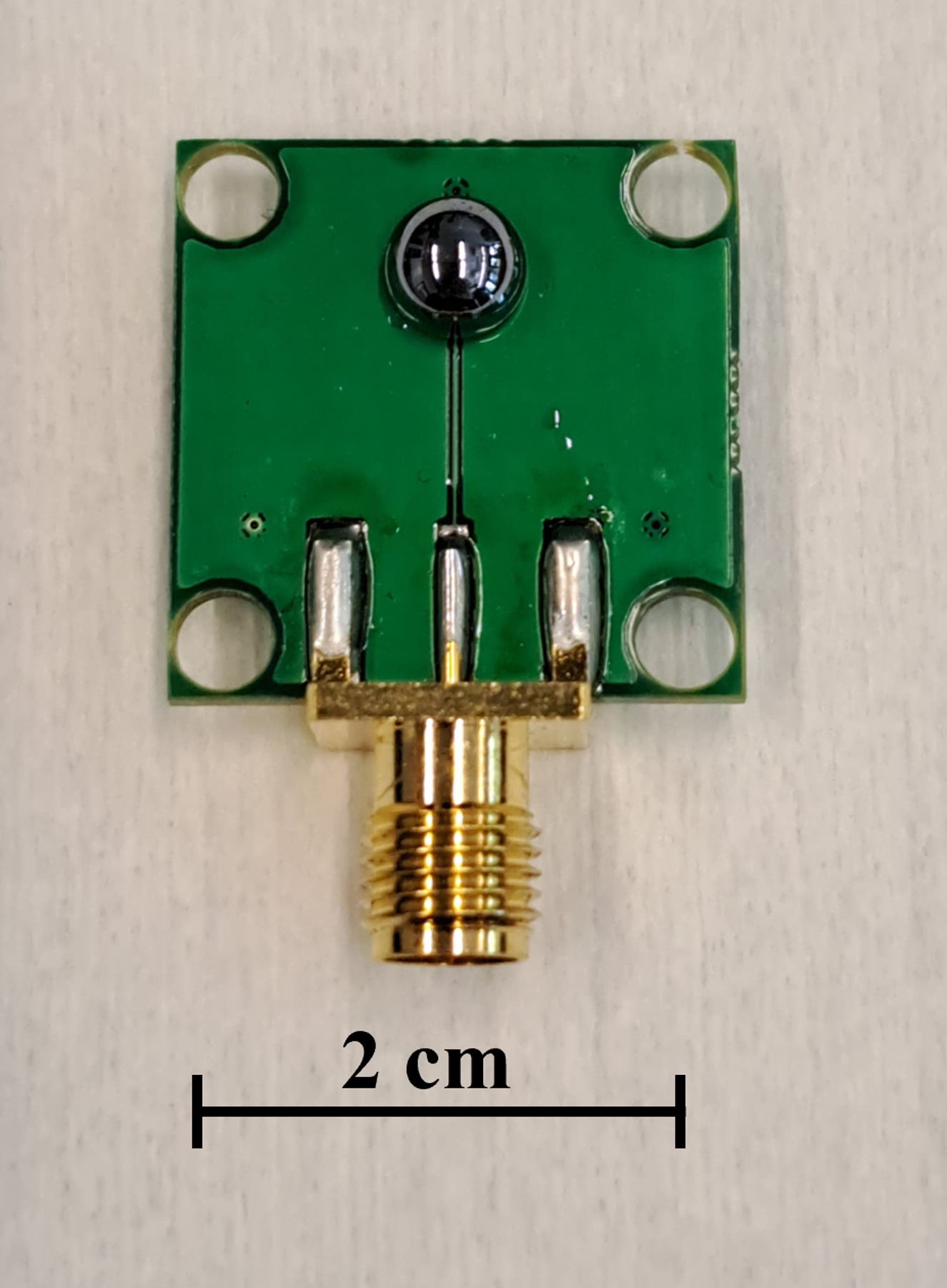Components for High Frequency Electronics
High-frequency components made in Duisburg
In the Center for Semiconductor Technology and Optoelectronics (ZHO), the department BHE is engaged in research on specialized semiconductor materials and technologies for high-frequency wireless communication and terahertz applications
Dear Students,
In the winter semester of 2025/26, we will offer the following courses in the fields of EIT and Nanoengineering:
- Electronic devices (B.Sc.)
- Nanoelectronics (M.Sc.)
- THz- and RF chip technologies (M.Sc.)
- Semiconductor technology (M.Sc.)
Additionally, we continuously offer internships and theses (B.Sc., M.Sc., Ph.D.), as well as jobs for student assistants in our research topics THz electronics, THz sensors, and semiconductor material research.
Hier ist die Übersetzung auf Englisch:
If you have any questions, the secretariat will be available in person during the office hours of 10-11 am.
Information on courses
BHE-Seminar
In the seminar of the Chair of High-Frequency Electronics Components, presentations take place on Thursdays at 10 AM, including the colloquia of the thesis and project works conducted in the field. The seminar is open to the public, and we look forward to your participation!
For more information about the BHE seminar series, please find it here.

Project and Thesis Works
The field of High-Frequency Electronics Components continuously offers exciting and practical topics for project and thesis work for Bachelor's and Master's programs. Students work with state-of-the-art process systems and measurement devices.
Various topics are available in the areas of high-frequency measurement technology and simulation, chip and semiconductor material technology, as well as in RF packaging technology. The work on material and chip technology takes place in the cleanroom of the ZHO.

30.10.2025 - 08:00:00
BHE Company Outing: Community and Adventure!

07.08.2025 - 10:00:00
Paper: A 0.55-THz Self-Injection-Locked Resonant Tunneling Diode Radar for Micrometer Ranging
29.07.2025 - 10:00:00
Paper: Analysis of subharmonic phase control in cavity-coupled resonant tunneling diode oscillators

18.07.2025 - 09:00:00
ITSS-TSaT 2025 - International Traveling Summer School on Terahertz Sciences and Technology
Current Research Projects:
EU Research Project (HORIZON CHIPS)
Move2THz

InP (Indium Phosphide) is a semiconductor material system that is well-suited for high-frequency transistors > 100 GHz. In the EU joint project Move2THz, the indium phosphide platform aims to evolve into a sustainable and commercially viable technology along a fully integrated European value chain, enabling mass-market applications such as mobile data communication and RF/bio-sensing, utilizing frequencies up to the THz range.
In the BHE field, we research and develop the material synthesis of indium phosphide for high-frequency transistors in 6G and THz applications.
DFG Collaborative Research Center/Transregio SFB/TRR 196 MARIE

The vision of MARIE is to achieve precise and dynamic characterization and localization of moving objects/materials in our everyday life using a mobile material transceiver. The BHE field is involved in the SFB/TRR MARIE through the subproject C02. This project focuses on researching efficient electronic terahertz sources. These sources are implemented using resonant tunneling diodes (RTD) through special semiconductor processes in the indium phosphide material system. Oscillators can still be efficiently operated at THz frequencies.
The control of the emitted frequency and the phase of the oscillators is particularly important to enable their coupling in fields. The principle of "subharmonic injection locking" is applied, meaning that the oscillators are phase-locked to a control oscillator with frequencies that are 2x or 3x lower.
Read moreBMBF 6G-Hub 6GEM

With their proposal "6GEM open – efficient – secure – safe," RWTH Aachen, Ruhr University Bochum, Technical University of Dortmund, and University of Duisburg-Essen successfully competed in a call for proposals from the Federal Ministry of Education and Research (BMBF). The four universities will collaborate starting August 1, 2021, along with four non-university research institutions on future communication technologies in 6G mobile communications. Co-applicants included the Fraunhofer Institute for Material Flow and Logistics, the Fraunhofer Institute for Microelectronic Circuits and Systems, the Fraunhofer Institute for High-Frequency Physics and Radar Technology, as well as the Max Planck Institute for Security and Privacy.
Read moreNRW.Forschungsinfrastrukturen THzIZ


Terahertz Integration Center
The THz semiconductor chips developed in the ZHO by the fields of BHE and OE are well-known in the international research community—now, the ZHO is creating opportunities for the realization of complete THz modules. This enables collaboration with industry and research institutions at the system level, for applications of the day after tomorrow: 6G terahertz communication with data rates exceeding 100 Gigabits/s, cutting-edge radar systems, material detection, and medical imaging. For new production facilities and equipment, the UDE is receiving over 6.5 million euros from state and EU funds under the EFRE/NRW funding line for research infrastructures. This will create a unique university Terahertz Integration Center (THzIZ) in Germany, covering the breadth from materials through chip technology to modules and systems.
Read more
BMBF Framework Program Microelectronic ForLab SmartBeam

Research Laboratory Microelectronics Duisburg-Essen for High-Frequency Beamforming
In the Microelectronics Research Laboratory (ForLab) SmartBeam, electronic and photonic high-frequency chips are developed. New applications in robotics and autonomous transportation require high-resolution radar systems with the capability for material discrimination. This can be achieved with carrier frequencies in the THz frequency range. To generate THz radiation with sufficient intensity, individual THz emitters need to be combined. These "phased array" configurations enable the steering of the beam in any direction for scanning the environment—this is the goal of ForLab SmartBeam.
The ForLab SmartBeam is funded by the BMBF with €4 million until 2021: a new crystal growth facility (metal-organic vapor phase deposition) for the growth of semiconductor structures for THz transistors, an atomic layer deposition (ALD) system, and THz measurement instruments will be newly acquired in this project. In addition to BHE, the fields of OE and DSV are also involved in ForLab.
Read moreJoint Lab UDE / FBH InP Devices Joint Lab

Development of Innovative Materials and Devices for Terahertz Electronics
The UDE has established the Joint Lab "InP Devices" with the Ferdinand-Braun-Institut in Berlin. The Joint Lab leverages the complementary infrastructures of the FBH and the UDE to combine fundamental material and device research at the UDE—with a focus on indium phosphide (InP)—with the industrially applicable process technology of the FBH. With InP-based monolithically integrated high-frequency circuits (MMIC), it is possible to achieve the highest frequencies in the terahertz (THz) band, thereby enabling new system applications to be realized cost-effectively. Together, the partners explore innovative semiconductor structures and devices for THz applications and develop integrated components for the use of electronic THz technology. The applications include non-destructive material testing, high-resolution medical imaging, and broadband communication systems.
Read more